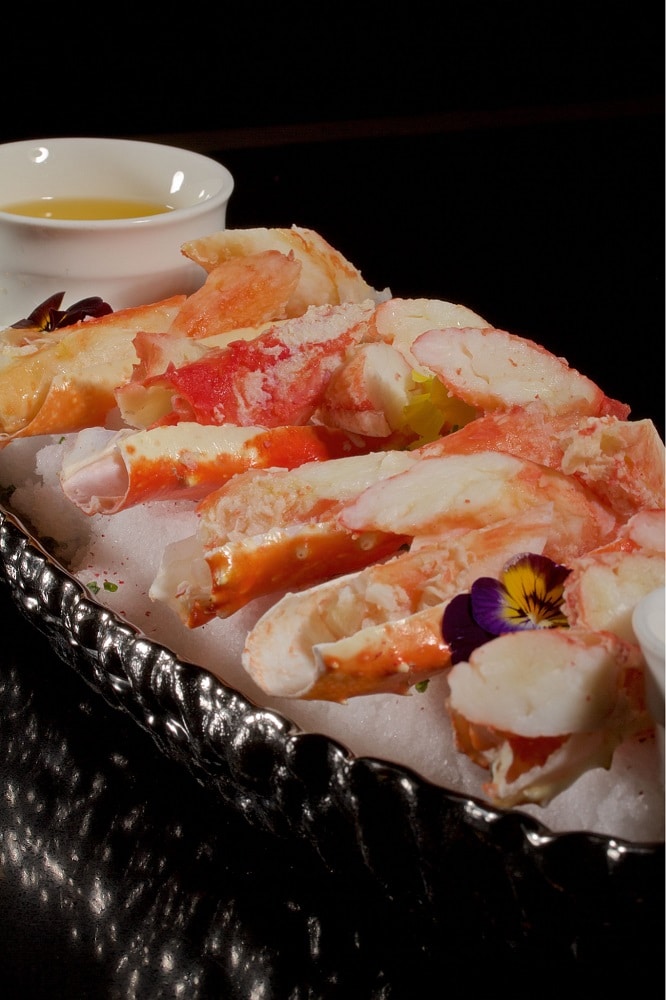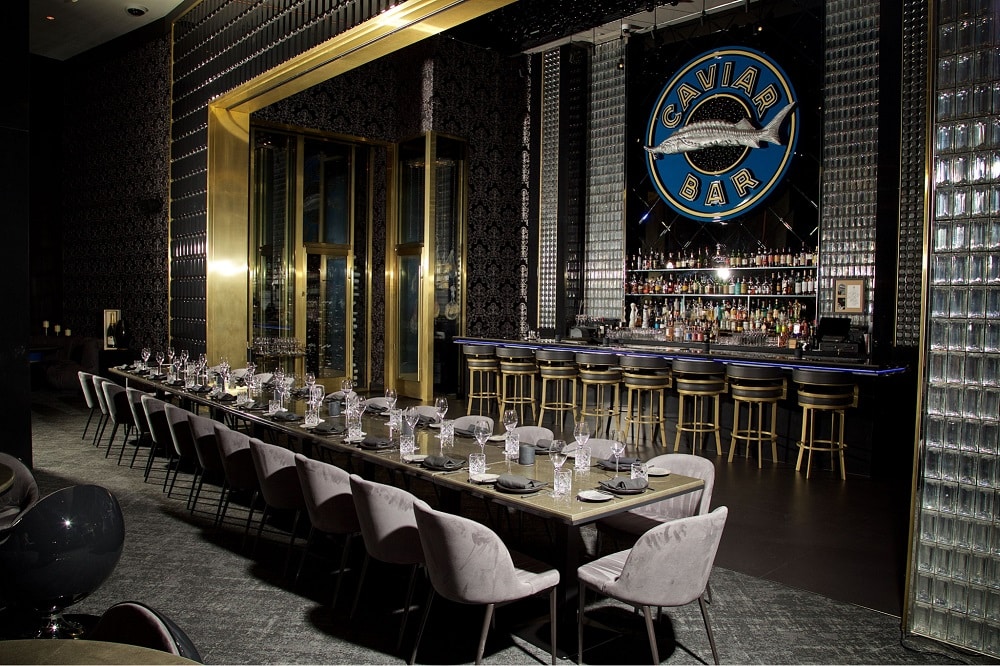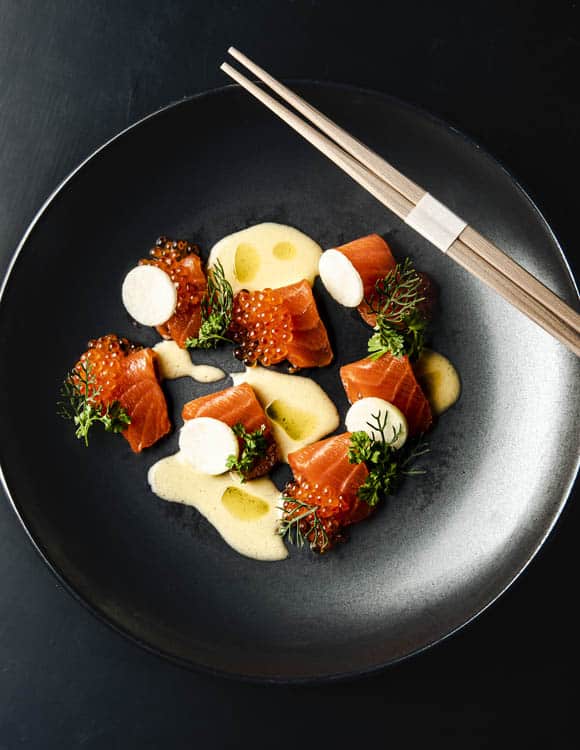Seafood 101:
8 Seafood Myths
Seafood is often touted as a healthy menu option, but some dispute that. When you’re planning to dine out, you want a superb experience, which means choosing a place with an outstanding atmosphere and delicious food. At Aqua Seafood & Caviar Restaurant, we want our guests to be confident in the quality of every dish on our menu, so we’re shedding light on some popular seafood myths.
Myth # 1: Seafood is unsustainable
Overfishing could indeed have a devastating impact on fish stocks. Overfishing could cause some fish to become extinct if it’s left unchecked. However, increased awareness has prompted the industry to embrace sustainable fishing practices, including producing farmed fish and introducing caps to preserve fish populations.
What seafood is sustainable? U.S. laws govern the fishing industry, promoting responsible fishing and the preservation of fish stocks. When buying fish in the store, you can be confident you’re choosing sustainable fish options by purchasing fish with the Marine Stewardship Council’s (MSC’s) label.
There are places in the world where consuming wild-caught fish is sustainable. For example, crab, lobster, prawns, and salmon are plentiful in New Zealand and Australia. In the United States, seafood lovers can also enjoy sustainable salmon, prawns, lobster, halibut, and other types of seafood.

Myth # 2: Seafood is very expensive
Supply and demand affect prices in every industry, and fishing is no exception. When fish stocks are low, prices may rise. Prices can also increase if trade issues affect fisheries or the type of fish you desire is out of season.
That doesn’t mean that all seafood is prohibitively expensive, though! Fish farms provide sustainable fish at affordable prices. Choosing fish that are in season and consuming white fish are great ways to enjoy affordable seafood year-round.
Myth # 3: You can only get shellfish from September to December
The myth about when you can eat shellfish originated from the health concerns about Red Tide. High toxic algae levels during Red Tide made oysters and shellfish dangerous to eat because consuming algae causes paralytic shellfish poisoning (PSP).
With modern science and marine monitoring, shellfish lovers can be confident in the supply year-round. Fisheries keep a close watch for Red Tide, curtail fishing in affected areas during Red Tide, and check shellfish toxin levels to ensure the shellfish on the market are safe, so you never have to worry if you’re craving shrimp or lobster during May, or any other month of the year.
Make your reservation today and enjoy crab cakes, lobster rolls, oysters, or one of our other mouthwatering shellfish entrees.
Myth # 4: You shouldn’t mix seafood and dairy
Different cultures have distinct ways of preparing and serving various foods. The myth about seafood and dairy being a poor combination stems from Italy. Although some people may avoid this combination for religious reasons, there’s no reason others can’t enjoy a cheesy fish bake or fish with pasta coated in a creamy sauce.
Myth # 5: Fresh fish is always better than frozen
There are multiple health benefits from frozen fish. Since foods are frozen when they’re safe to consume, freezing them preserves all the nutrients and flavor. You’ll get all the same health benefits and enjoy a delicious meal when you consume frozen fish.
Choosing frozen fish also helps prevent global fishing industries from having a negative environmental impact. Fish is caught in season, when stocks are plentiful, and frozen for transport around the globe. Freezing fish ensures fish lovers can enjoy their favorite dishes every month of the year without supporting unsustainable fishing practices.
Myth # 6: Fish is unhealthy because of the mercury and other toxins
Anyone concerned about their health may wonder about the levels of mercury and other toxins in fish, such as pesticides and PCBs. Although fisheries check for toxins, it’s understandable that you’d want to know how to ensure you aren’t eating contaminated fish.
One way to avoid fish toxins is to choose farm-raised fish instead of wild-caught fish. Eating younger and smaller fish can also reduce your risk of contaminants. Since some contaminants, such as PCB, build up in the fat and skin, you can reduce your risk of exposure by avoiding the fat and skin when you’re enjoying a fish dinner.
Contaminants also affect some species more than others. Consuming fish species such as salmon, tilapia, coho, crab, and prawns up to three times per week is safe.
Myth # 7: You can’t eat seafood and avoid the fishy smell
Although some fish have a distinct fishy smell, many types of seafood don’t have a seafood smell. Fresh fish doesn’t have the same smell, so the lack of odor is a good sign when shopping for fish. Tilapia, Arctic char, flounder, and cod are all fantastic options for people who want to enjoy the health benefits of consuming fish but don’t enjoy the fish smell or a strong fishy taste.
Myth # 8: You can only get great seafood on the coast
Transporting seafood over large distances wasn’t always feasible. Now, thanks to refrigerated trucks and other modern transportation options, you don’t have to go to the coast to enjoy a delicious seafood dinner. The best seafood restaurant in Las Vegas rivals the seafood entrees of any restaurant on the East or West Coast.
The best seafood and more in Las Vegas

At Aqua Seafood & Caviar Restaurant, we are serious about our seafood. Join us today and explore for yourself what seafood dishes have to offer. Sustainable, healthy, and delicious, let us craft a meal for you that you will never forget. When you enjoy dinner at Aqua Seafood & Caviar Restaurant, we’ll serve you quality seafood cooked to perfection in a refined setting. Step away from the city’s bright lights and bustle and savor the experience and food at Aqua Seafood & Caviar Restaurant.
Come join us for dinner. Seafood and more on the Las Vegas Strip.
Don’t Miss Out on the Best Seafood in Las Vegas!
Cod is a nutritious fish that is high in protein and low in fat. It is a firm fish with a flaky texture and has a mild flavor that is delicate and slightly sweet. Cod is an excellent source of omega-3 fatty acids, which are beneficial for heart health. When buying cod, look for fish with bright eyes, pink gills, and firm flesh. Avoid cod with cloudy eyes, dull coloring, or a strong fishy odor. Fresh cod can be stored in the refrigerator for up to two days. Cooked cod can be frozen for up to six months.
Craving some delectable seafood in the vibrant city of Las Vegas? Look no further than Aqua Seafood & Caviar Restaurant, your ultimate destination among Las Vegas seafood restaurants.
Seafood is undeniably one of the most beloved cuisines, but we understand that deciding where to begin can be a bit daunting. That’s why we’ve crafted a dining experience at Aqua Seafood & Caviar Restaurant that caters to seafood lovers of all backgrounds and tastes.
Join us for dinner and let us show you firsthand why we’re renowned as the best seafood spot in town!

